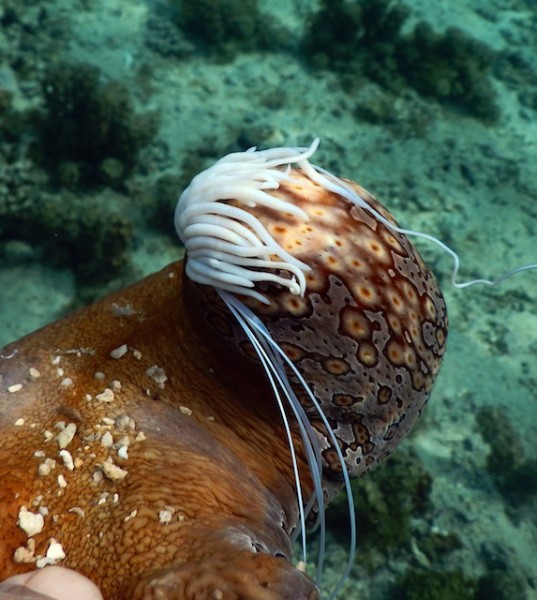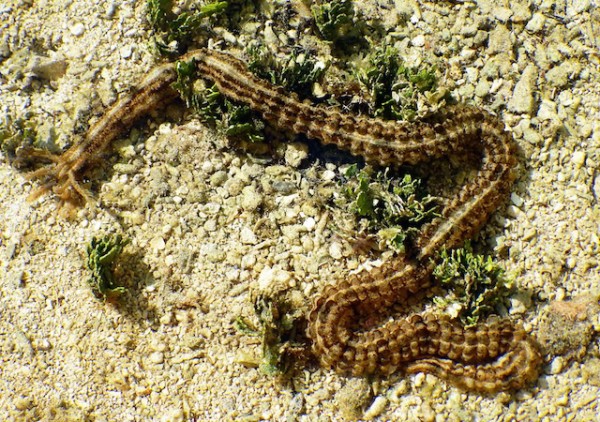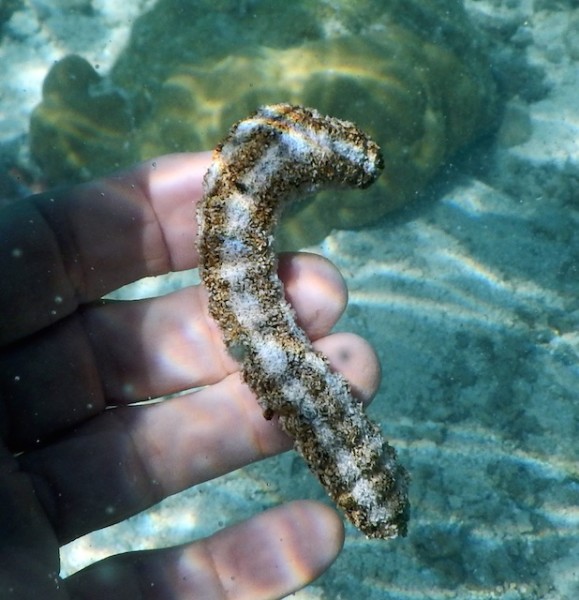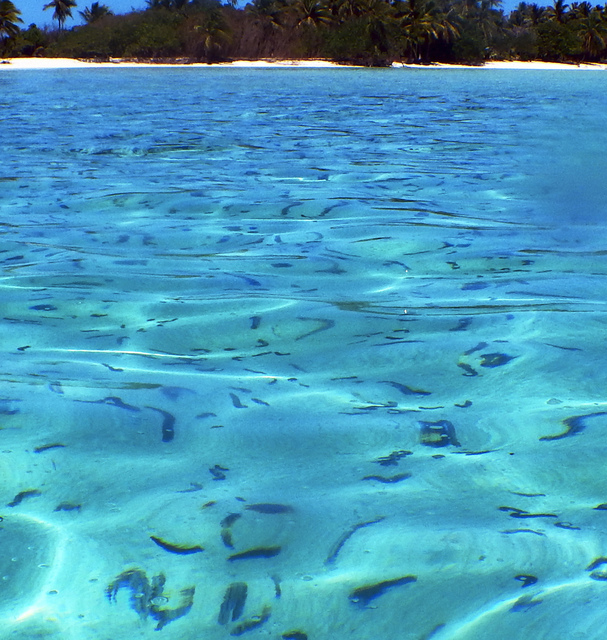Published in the Ocean Watch column, Honolulu Star-Advertiser © Susan Scott
August 3, 2015
During my recent trip to Australia, I occasionally had Internet access to Hawaii news and learned that our sea cucumbers are in trouble because people have been harvesting them off Oahu and Maui. One headline in this newspaper said, “Sea cucumbers seem to need a friend right now.”
Well, little Hoovers of the sea, you’ve got a friend in me.
A more apt name for sea cucumbers would be sea sausages because they’re not veggies; they’re animals, hot dogs of the ocean that do a fine job of scrubbing the floor.
A ring of tentacles around sea cucumbers’ mouths sweeps the ocean bottom, picking up sand. The sea cucumber’s digestive system extracts bits of dead plants and animals from the grains and expels clean sand from its anus.
 ©2015 Susan Scott
©2015 Susan Scott
The sea cucumber has a busier anus than most animals — it also breathes through it. Inside the anus is a respiratory tree. Muscles around the branches circulate water to extract oxygen and release carbon dioxide. That’s why if you pick up a leathery sea cucumber, a stream of water often whooshes out of its anus.
The anus of some sea cucumber species provides shelter for several species of pearlfish, a narrow translucent fish that forages at night near its chosen host. Come dawn, the conspicuous pearlfish wiggles into its landlord’s anus and there rests, protected from daytime predators.
Not all sea cucumbers welcome pearlfish in their rectal chambers because the fish can get too cozy in there and start nibbling its host’s internal organs. Some sea cucumber species have a circle of five inward-pointing teeth around the anus, effective in keeping out potential parasitic squatters.
Hawaii hosts 50 or so species of sea cucumbers, half in shallow water, half in the deep sea. The diversity is large, ranging from firm and muscular to soft and squishy, and they grow from 1 inch to 3 feet long.
 The squishy kind.
The squishy kind.
©2015 Susan Scott
Because some fish eat the slow-moving sea cucumbers, they have evolved defenses you might expect to see only in sci-fi films. Some species shoot out sticky, toxic threads from their anuses to immobilize their enemies. Others produce a poison called holothurin that can kill fish and even people who eat them.
Another defense, called auto-evisceration, is what it sounds like. The creature ejects its internal organs, again through that all-purpose anus. This distracts the predator while the cucumber crawls into hiding. It takes a month or more for the organs to grow back.
 A small species of sea cucumber.
A small species of sea cucumber.
©2015 Susan Scott
A pearlfish barging into a sea cucumber’s anus doesn’t trigger the shooting of threads or the throwing up of organs. These defenses take place only when a threat occurs on the outside surface of the creature.
Some people like to eat several leathery species of sea cucumbers that live in Hawaii’s waters, but they aren’t abundant enough for limitless collecting. After the state discovered in June the commercial killing and selling of 3,000 to 4,000 individuals, the agency passed an emergency 120-day ban on taking any sea cucumbers in Hawaii’s waters. The agency is now working on long-term rules for the fishery that will keep the populations healthy.
Fortunately, our sea cucumbers have more friends that just me.
 Sea Cucumbers at a remote French Polynesian Atoll.
Sea Cucumbers at a remote French Polynesian Atoll.
©2015 Susan Scott